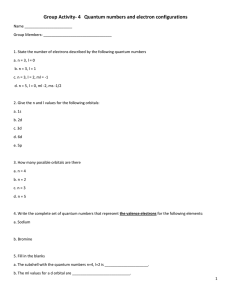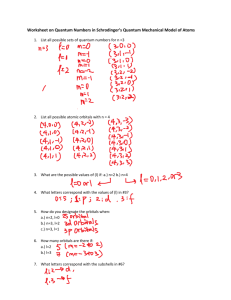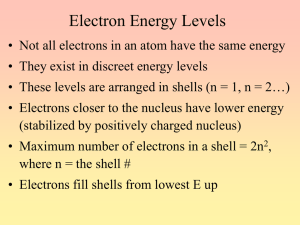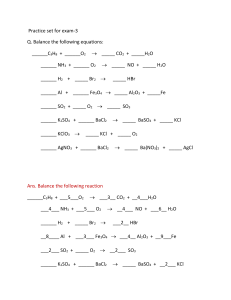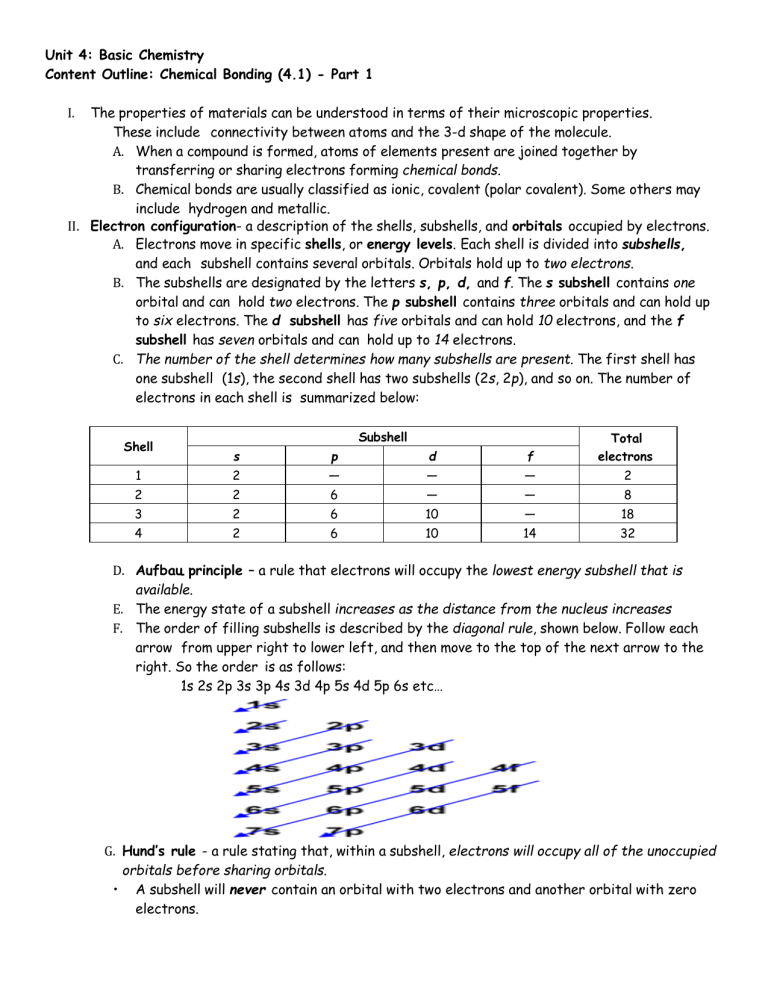
Unit 4: Basic Chemistry Content Outline: Chemical Bonding (4.1) - Part 1 The properties of materials can be understood in terms of their microscopic properties. These include connectivity between atoms and the 3-d shape of the molecule. A. When a compound is formed, atoms of elements present are joined together by transferring or sharing electrons forming chemical bonds. B. Chemical bonds are usually classified as ionic, covalent (polar covalent). Some others may include hydrogen and metallic. II. Electron configuration- a description of the shells, subshells, and orbitals occupied by electrons. A. Electrons move in specific shells, or energy levels. Each shell is divided into subshells, and each subshell contains several orbitals. Orbitals hold up to two electrons. B. The subshells are designated by the letters s, p, d, and f. The s subshell contains one orbital and can hold two electrons. The p subshell contains three orbitals and can hold up to six electrons. The d subshell has five orbitals and can hold 10 electrons, and the f subshell has seven orbitals and can hold up to 14 electrons. C. The number of the shell determines how many subshells are present. The first shell has one subshell (1s), the second shell has two subshells (2s, 2p), and so on. The number of electrons in each shell is summarized below: I. Subshell s p d f Total electrons 1 2 — — — 2 2 2 6 — — 8 3 2 6 10 — 18 4 2 6 10 14 32 Shell D. Aufbau principle – a rule that electrons will occupy the lowest energy subshell that is available. E. The energy state of a subshell increases as the distance from the nucleus increases F. The order of filling subshells is described by the diagonal rule, shown below. Follow each arrow from upper right to lower left, and then move to the top of the next arrow to the right. So the order is as follows: 1s 2s 2p 3s 3p 4s 3d 4p 5s 4d 5p 6s etc… G. Hund’s rule - a rule stating that, within a subshell, electrons will occupy all of the unoccupied orbitals before sharing orbitals. • A subshell will never contain an orbital with two electrons and another orbital with zero electrons.
